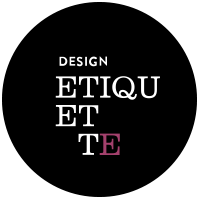Mariana and her team were fantastic to work with. Responsive, understanding, and organized. Most importantly the quality of the work is exceptional. I am tremendously proud to be represented by the branding that Design Etiquette created for my business.
Brandon Chillingworth — Hacked BD
When To Rebrand
— When To Rebrand — When To Rebrand— When To Rebrand
Branding, Strategy, Business
Did you know that a rebrand can make or break your brand?
A brand redesign is a significant step. Here are some reasons why your business might need a rebrand or brand refresh:
1. Poorly Executed Brand Identity:
Maybe you didn’t invest in a high-quality brand identity from the start, or perhaps the designer or studio you worked with missed the mark. Now that your brand is more established and generating revenue, it might be time to hire a skilled professional to redesign your brand identity.
Ex: Starbucks
Starbucks’ logo was such an ugly baby that the company decided to simplify and modernize it in 1987, transforming the siren into a cleaner, less-detailed image. They also chose their famous green color to stand out in a market full of browns. This evolution helped Starbucks align with modern aesthetics and appeal to a broader audience.
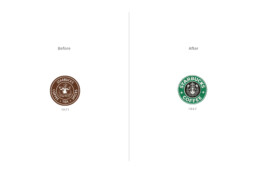
2. Outdated Brand Image:
Brand identities should be timeless, but if yours feels outdated, it’s time for a refresh to stay relevant and modern.
Ex: Firefox
Mozilla Firefox’s logo had been tweaked slightly over the years, but by 2019, the classic fox circling the globe began to look outdated, especially with the rise of flat design trends. The company rebranded with a more abstract, simplified version of the logo, retaining the essence of the fox but using bold, vibrant colors that better fit modern design aesthetics.
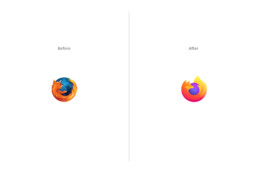
3. Expansion or Diversification:
If your business expands into new markets or offers new products/services, rebranding can help communicate these changes effectively.
Ex: Amazon
Amazon started in 1994 as an online bookstore, with a logo that reflected its focus on books. However, as the company expanded into selling a wide range of products—from electronics to groceries—and eventually evolved into a global e-commerce giant, a rebrand was necessary. In 2000, Amazon introduced its now-famous logo featuring an arrow curving from the “A” to the “Z,” symbolizing the company’s shift to selling “everything from A to Z.”, reflecting its growing product diversity.
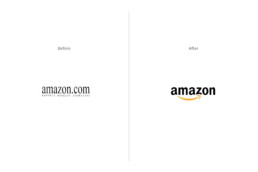
4. Mergers or Acquisitions:
After a merger or acquisition, rebranding can help unify the brand identity of the new business. This process goes beyond aesthetic changes, aiming to establish a new brand that resonates with customers, employees, and stakeholders.
Ex: Meta
Facebook rebranded as Meta in 2021 to signify its shift from being just a social media company to focusing on building the metaverse. This change unified the company’s different platforms (Facebook, Instagram, WhatsApp, etc.) under one new identity.
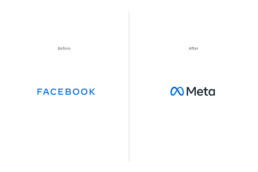
5. Negative Perception:
If your brand has faced negative publicity or has gained a bad reputation, rebranding can help rebuild trust and improve perception. It’s a dirty move, but someone’s gotta do it.
Ex: Uber
After facing negative publicity due to internal issues and public controversies, Uber rebranded in 2018 with a new, friendlier logo and visual identity.
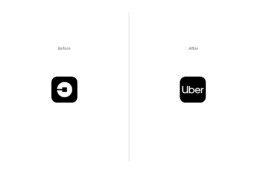
6. Innovation or Evolution:
As your business grows & adapts, there might be changes in your offerings or values.
Ex: Apple
Although Apple hasn’t drastically changed its logo, the brand has consistently refreshed its identity to match its evolution as a tech innovator. From the rainbow-colored apple to a sleeker monochrome design, the brand reflects modernity and cutting-edge innovation as it continues to grow.
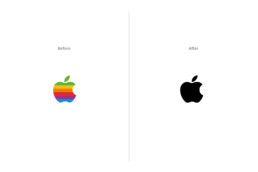
7. Changes in Name:
Whether you are changing your business name because it is difficult to pronounce, or because of Trademark conflict, a change in your brand identity is needed.
Ex: Kit
Recently, ConvertKit changed its name to simply ‘Kit,’ which I believe will benefit the brand immensely. The name change reflects their evolution from an email marketing tool into a broader creator-focused platform. Alongside the new name, they launched a refreshed brand identity that looks more modern and friendly, aligning perfectly with their mission to empower creators with simple and effective tools.
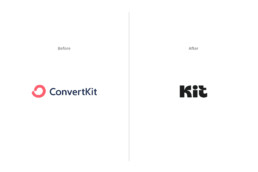
Is it time for your brand to evolve? Let’s explore how a fresh perspective can enhance your identity and impact.
Schedule a free discovery call today, and let’s talk about your business!
Mariana and her team were fantastic to work with. Responsive, understanding, and organized. Most importantly the quality of the work is exceptional. I am tremendously proud to be represented by the branding that Design Etiquette created for my business.
Brandon Chillingworth — Hacked BD
Key Traits That Set Great Coffee Brands Apart
— Key Traits That Set Great Coffee Brands Apart — Key Traits That Set Great Coffee Brands Apart
Branding, Packaging, Business
Ever since its origins, coffee has become one of the world’s favorite drinks, and the most consumed next to water. The global coffee market is huge, with millions of people involved in its production, trade, and retail. Your local supermarket is filled with different varieties: whole bean, ground, light roast, dark roast, and production processes: honey, anaerobic, and natural. You can find a coffee shop in any city around the world, with different prices and experiences: the good, the bad, and the ugly.
Some people might argue that coffee is the perfect drug because of its dependency cycle: we drink it to wake up, it disrupts our sleep cycle, so we need it again the next morning. Others suggest that drinking coffee reduces the risk of certain diseases like Parkinson’s, Alzheimer, and type 2 diabetes. Love it or hate it, it is a profitable industry valued at approximately $100 billion per year worldwide.
Just like wine, the best coffee is the one you like. But how do you figure out which coffee to try out? For me, I always go for the one with the best packaging design—same goes for wine. This might not be the best selection method, but that’s how my designer brain works. And I bet a lot of people think the same way!
The way we brand coffee has changed a lot in recent years. Traditional colors, hand-drawn illustrations, and watercolor images of mountains and nature—like the ones that used to hang in your grandma’s living room—have been replaced by modern illustrations, sophisticated typography, and minimalism.
If you’re thinking about starting a coffee-related business, whether it’s a coffee shop or a B2C coffee roasting venture, there are some key traits to consider when developing your brand identity and packaging design:
1. Modern Design:
Coffee branding often embraces minimalism, featuring clean, uncluttered designs emphasizing simplicity. Whether vibrant or muted, the key is elegance and clarity.
2. Creative Illustrations & Graphics:
Custom artwork with original illustrations or graphics can set your brand apart and tell a compelling story.
3. Typography:
Typography plays a crucial role in shaping your brand identity. The best coffee packaging design uses stylish and modern fonts that enhance readability and convey the brand’s personality.
4. Badges & Logo Versatility:
Contemporary coffee brands often use a range of badges and logos to represent their identity. While a primary logotype is essential, incorporating additional badges—often inspired by vintage coffee shops—can create a unique and versatile brand image.
5. Transparency & Storytelling:
Providing detailed information about the coffee’s origin, flavor profile, and brewing instructions creates a meaningful experience for coffee drinkers. Each story adds value and connection to every cup.
6. Innovative Features:
Interactive elements, such as QR codes or augmented reality, offer additional information about the brand and enhance consumer interaction. These features create a more immersive relationship with your product.
7. Sustainable Packaging:
More and more brands are setting themselves apart by using sustainable packaging materials, and eco-friendly practices that will improve their product and its impact.
8. Seasonality:
Special packaging for seasonal or limited-edition products creates exclusivity and appeal. This is a great way to boost sales by offering your customers a newance outside of the everyday line of products.
Staying ahead of trends and focusing on innovative design can set your coffee brand apart in a crowded market. Whether you want to create a unique identity that is both modern and simple or engage with your customers through storytelling and incredible packaging, these elements will spark consumer interest and drive more sales. Try to apply a couple of these traits, or all of them, on your next branding project.
Mariana and her team were fantastic to work with. Responsive, understanding, and organized. Most importantly the quality of the work is exceptional. I am tremendously proud to be represented by the branding that Design Etiquette created for my business.
Brandon Chillingworth — Hacked BD
5 Essential Layers Every Brand Needs
— 5 Essential Layers Every Brand Needs — 5 Essential Layers Every Brand Needs
Branding, Business, Strategy
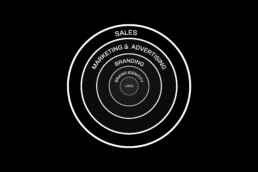
Imagine your brand as an onion, with each layer adding depth and flavor. At its core lies your logotype, its fundamental element. Every layer that surrounds this core will contribute different elements that, if done correctly, will help your brand succeed. Let’s dive into these layers.
1. Logo: The Tip of the Iceberg
Your logo is the visual cornerstone of your brand. It’s the first thing people see and the graphic element they associate with your business. While it’s just the tip of the iceberg, a well-designed logo is fundamental in initiating brand trust.
2. Brand Identity: Colors, Typography, Patterns, and More
Beyond the logo lies the broader spectrum of brand identity. This includes your brand’s colors, typography, patterns, and other visual elements like photography style. These elements work together to create a cohesive and memorable brand image that resonates with your audience.
3. Branding: Shaping Your Brand's Narrative
Branding is the process of crafting your brand’s story and identity. It includes your brand strategy, defining values, voice, personality, target audience, and market positioning. Additionally, branding extends to every touchpoint that shapes the brand experience, from how you communicate with customers to the sensory elements like smell, sight, and touch. Effective branding creates a strong emotional connection with your audience, turning them from customers to fans.
4. Marketing and Advertising: Amplifying Your Brand's Message
Once you’ve established your brand identity and strategy, it’s time to amplify your message through marketing and advertising. This includes strategies like content marketing, social media campaigns, and paid advertising, all aimed at reaching and engaging your target audience.
5. Sales: Converting Leads into Customers
The final layer of the brand-building process is sales. This is where all your branding and marketing efforts culminate in converting leads into customers. If your previous layers are well put together and you have a strong brand, the sales process can become smoother, as customers are already familiar and comfortable with your brand.
To finish this article, I’d like to point out the most crucial element, which I seem to have forgoten to mention: your product or service. While these 5 layers can help you attract more clients and build brand trust, if your offering isn’t top-notch, you might make a sale once, but that’s where it ends.
In conclusion, building a successful brand requires attention to each of these layers. From logo to marketing, to sales, each layer plays a crucial role in shaping your brand’s story and connecting with your audience. The more attention to detail and professionalism applied to each layer, the greater your brand’s chance of success.
What other aspects of brand management are you curious about?
